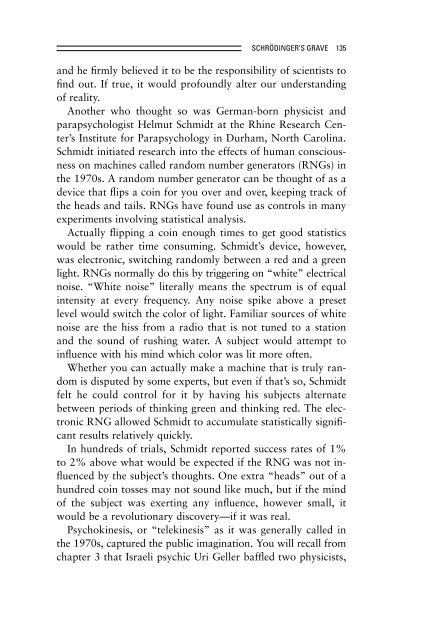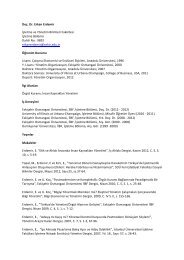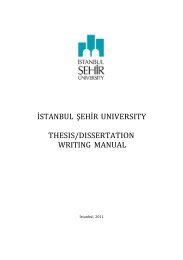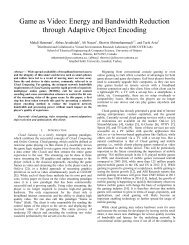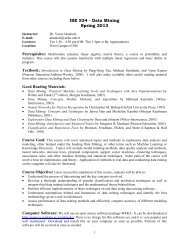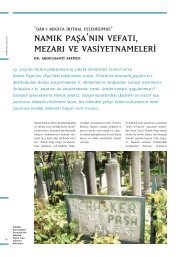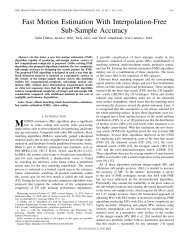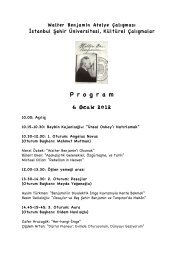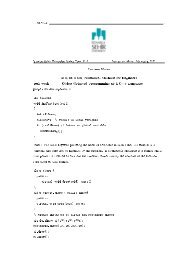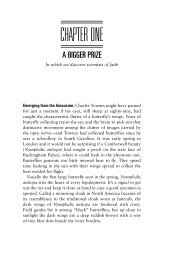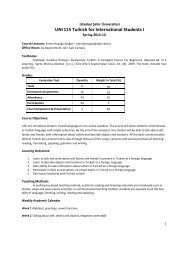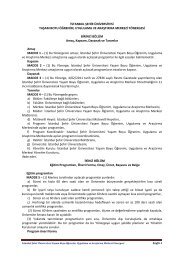Superstition: Belief in the Age of Science - My Sehir
Superstition: Belief in the Age of Science - My Sehir
Superstition: Belief in the Age of Science - My Sehir
- No tags were found...
You also want an ePaper? Increase the reach of your titles
YUMPU automatically turns print PDFs into web optimized ePapers that Google loves.
SCHRÖDINGER’S GRAVE 135and he firmly believed it to be <strong>the</strong> responsibility <strong>of</strong> scientists t<strong>of</strong><strong>in</strong>d out. If true, it would pr<strong>of</strong>oundly alter our understand<strong>in</strong>g<strong>of</strong> reality.Ano<strong>the</strong>r who thought so was German-born physicist andparapsychologist Helmut Schmidt at <strong>the</strong> Rh<strong>in</strong>e Research Center’sInstitute for Parapsychology <strong>in</strong> Durham, North Carol<strong>in</strong>a.Schmidt <strong>in</strong>itiated research <strong>in</strong>to <strong>the</strong> effects <strong>of</strong> human consciousnesson mach<strong>in</strong>es called random number generators (RNGs) <strong>in</strong><strong>the</strong> 1970s. A random number generator can be thought <strong>of</strong> as adevice that flips a co<strong>in</strong> for you over and over, keep<strong>in</strong>g track <strong>of</strong><strong>the</strong> heads and tails. RNGs have found use as controls <strong>in</strong> manyexperiments <strong>in</strong>volv<strong>in</strong>g statistical analysis.Actually flipp<strong>in</strong>g a co<strong>in</strong> enough times to get good statisticswould be ra<strong>the</strong>r time consum<strong>in</strong>g. Schmidt’s device, however,was electronic, switch<strong>in</strong>g randomly between a red and a greenlight. RNGs normally do this by trigger<strong>in</strong>g on “white” electricalnoise. “White noise” literally means <strong>the</strong> spectrum is <strong>of</strong> equal<strong>in</strong>tensity at every frequency. Any noise spike above a presetlevel would switch <strong>the</strong> color <strong>of</strong> light. Familiar sources <strong>of</strong> whitenoise are <strong>the</strong> hiss from a radio that is not tuned to a stationand <strong>the</strong> sound <strong>of</strong> rush<strong>in</strong>g water. A subject would attempt to<strong>in</strong>fluence with his m<strong>in</strong>d which color was lit more <strong>of</strong>ten.Whe<strong>the</strong>r you can actually make a mach<strong>in</strong>e that is truly randomis disputed by some experts, but even if that’s so, Schmidtfelt he could control for it by hav<strong>in</strong>g his subjects alternatebetween periods <strong>of</strong> th<strong>in</strong>k<strong>in</strong>g green and th<strong>in</strong>k<strong>in</strong>g red. The electronicRNG allowed Schmidt to accumulate statistically significantresults relatively quickly.In hundreds <strong>of</strong> trials, Schmidt reported success rates <strong>of</strong> 1%to 2% above what would be expected if <strong>the</strong> RNG was not <strong>in</strong>fluencedby <strong>the</strong> subject’s thoughts. One extra “heads” out <strong>of</strong> ahundred co<strong>in</strong> tosses may not sound like much, but if <strong>the</strong> m<strong>in</strong>d<strong>of</strong> <strong>the</strong> subject was exert<strong>in</strong>g any <strong>in</strong>fluence, however small, itwould be a revolutionary discovery—if it was real.Psychok<strong>in</strong>esis, or “telek<strong>in</strong>esis” as it was generally called <strong>in</strong><strong>the</strong> 1970s, captured <strong>the</strong> public imag<strong>in</strong>ation. You will recall fromchapter 3 that Israeli psychic Uri Geller baffled two physicists,


